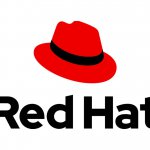Edge deployments flock to StarlingX R7.0

Organizations interested in deploying services and applications at the edge would be well-advised to take note of the latest version of StarlingX, the basis of many of the world’s telecommunications operators’ infrastructure.
The OpenInfra Foundation is a community of companies and developers that build the tools needed to run edge, data centers, edge installations, and a great deal of the technology that runs the type of carrier infrastructure on which most of us rely – possibly without knowing it. The OpenInfra Foundation’s community produces StarlingX, and its most recent iteration, R7.0.
If we consider the global communications network as a technology project, its complexity and requirement for rock-solid continuity are mind-boggling at scale. So too are the required levels of security and the need for remote management, with the latter especially reliant on automation of installations, updates, and monitoring.
But StarlingX has formed the core of this infrastructure’s software for many years, and in its latest guise improves security, parallel processing abilities, and is based on a tuned kernel that’s especially capable of microsecond accuracy (it uses Precision Time Protocol 3.1.1 of linuxptp).
Version R7.0 has shifted away from being based on CentOs and moved to Debian – the longest running, continuously maintained Linux distribution, known for its stability and, at least by default, insistence on all elements’ open-source nature. By moving from the Red Hat-backed CentOS, the project has an assured platform that’s not subject to the vagaries of the corporate boardroom (CentOS was given a new direction by Red Hat last year and re-badged as CentOS Stream).
The platform uses an all-open software stack with Ceph supporting distributed, object-based and S3-compatible storage, OpenStack for cloud management, and containerization with Kubernetes.
In addition to the telecomms industry, StarlingX is commonly found in IIoT and IoT deployments, as well as in video streaming and distribution networks. It’s also slated to be at the core of many 5G installations, where the need for low latency will make edge computing and integral part of emerging technologies like the much vaunted but still elusive autonomous transport systems of the future.
Security is beefed up with logging of API calls to Kubernetes and the replacement of Kubernetes Pod security Policies with Pod Security Admission Controller. Also new is the ability to manage and deploy sub-clouds, allowing massively-scalable edge roll-outs that can be managed with powerful group policies.
“Cloud-native” or “cloud-first” technologies are much hyped in business technology at present, but the terms are becoming a misnomer. It’s technology like OpenStack (designed for data centers’ cloud operations) and containers (usually mentioned in the same breath as cloud-native) that are making edge computing possible. Arguably, edge computing is cloud computing, albeit running on lower-powered, and often physically smaller hardware. The similarities between the two paradigms outnumber the differences, however, with the biggest element in common being a core of community developed, open and freely distributable software.










